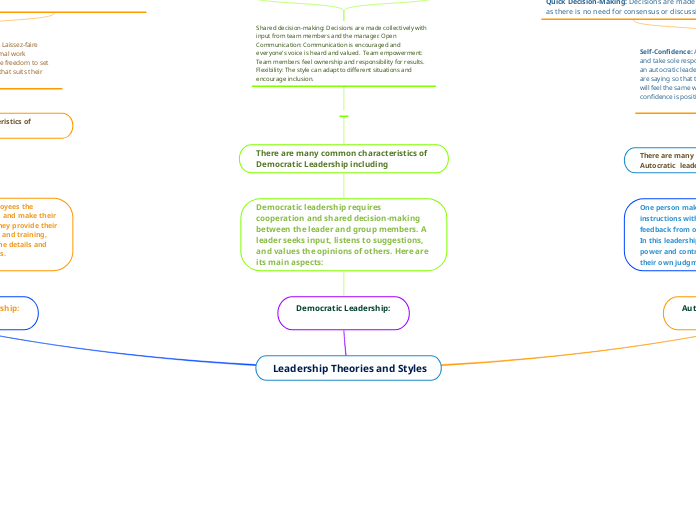av Jomana Andrih för 2 årar sedan
117
Leadership Theories and Styles

av Jomana Andrih för 2 årar sedan
117

Self-Confidence: Autocratic leaders hold absolute power and take sole responsibility for all decisions. When you are an autocratic leader, you should be confident in what you are saying so that the people you expect to listen to you will feel the same way. It is seen to be positive when confidence is positively expressed.
Strict Hierarchy: There is a clear hierarchy, and workers are required to follow through with all instructions.
Quick Decision-Making: Decisions are made swiftly as there is no need for consensus or discussion.
Shared decision-making: Decisions are made collectively with input from team members and the manager. Open Communication: Communication is encouraged and everyone's voice is heard and valued. Team empowerment: Team members feel ownership and responsibility for results. Flexibility: The style can adapt to different situations and encourage inclusion.
Democratic leadership achieves balance by involving everyone in the process. Autocratic leadership is effective, but it can stifle creativity and motivation. Laissez-faire leadership promotes autonomy but may lack direction.
Compare and Contrast: Autocratic leadership is highly centralized, with decision-making power in the hands of one person, while laissez-faire leadership shares it among team members.
There are many common characteristics of Laissez-Faire Leadership including
1. very little direction from leaders: Laissez-faire leaders often create a flexible and informal work environment where employees have the freedom to set their own schedules and work in a way that suits their preferences, within certain boundaries.
3. It will be expected that individuals manage their own issues.
2. Employees are capable of making decisions: